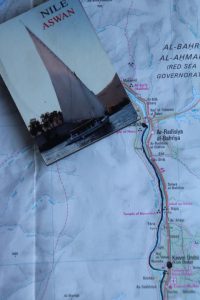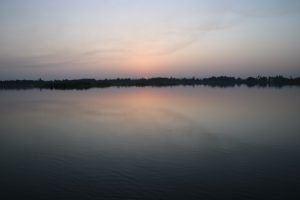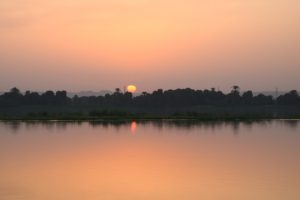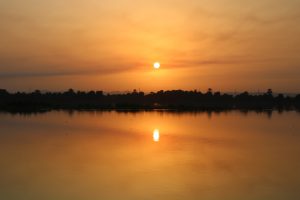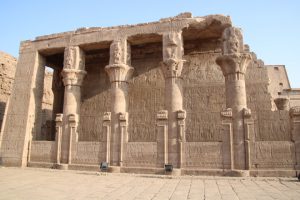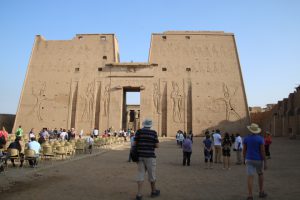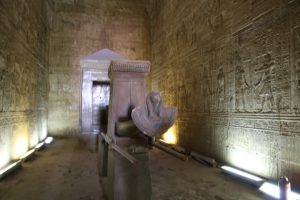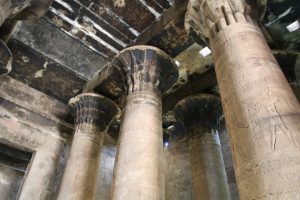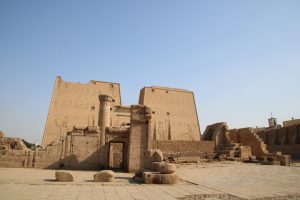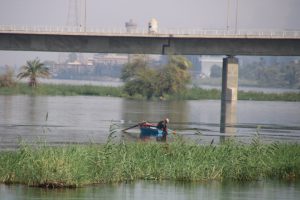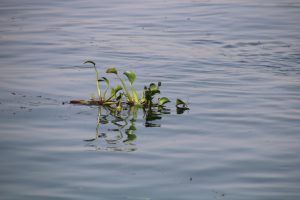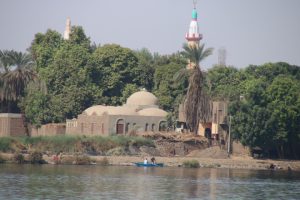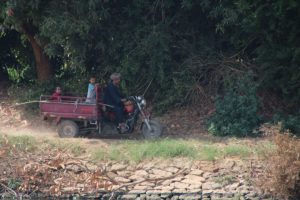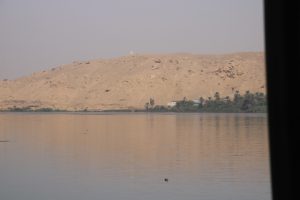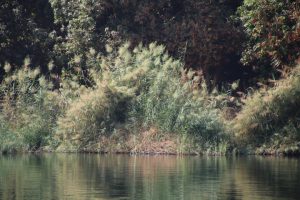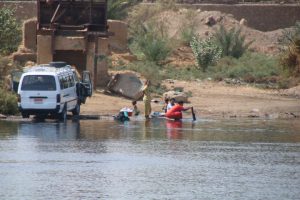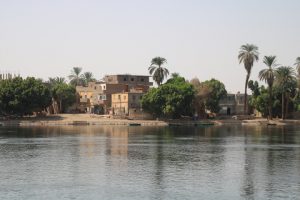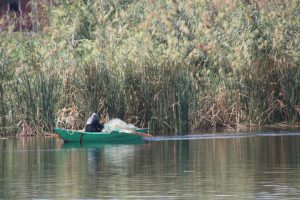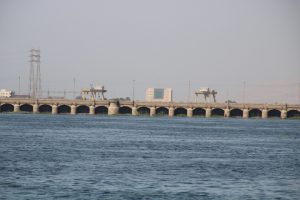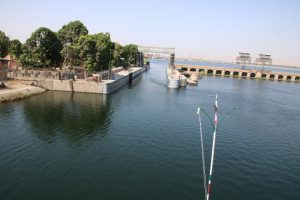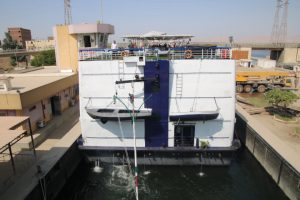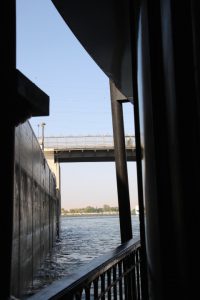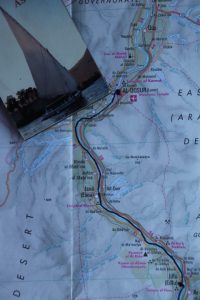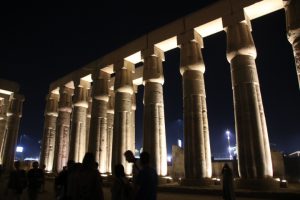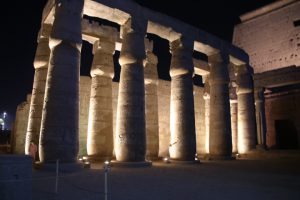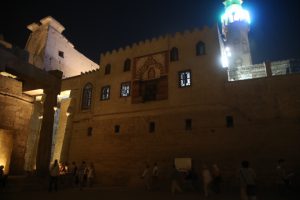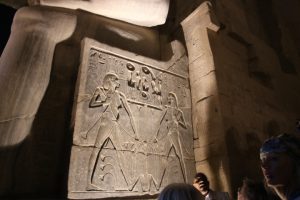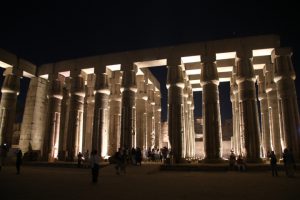We had an early start today to visit the Edfu Temple. We awoke as the sun was rising over the Nile.
This early visit enabled us to see the temple in its best light and empty of visitors. It is excellently preserved and construction started in 237 BC and took two centuries to complete. Again, it is a new temple and has escaped destruction from Nile floods because it is built on a rise above the broad river valley. Its well preserved reliefs have yielded much information about the temple and the gods to which it is dedicated. Two hundred years ago the temple was buried by sand and in the late 19th century was visited by the Scottish painter, David Roberts, who witnessed Bedouin people living on the sand in the shelter of the temple and smoke from their cooking fires still covers the roof.
After the visit at about 9:30 a.m. we departed northwards towards Luxor.
On this journey the Nile is in places confined to a narrow channel as the desert escarpments close in. This is going to be a feature of the valley all the way to Cairo.
The lush fields, papyrus and palm tree lined river banks are punctuated with small farming communities and we witness daily life as we pass by. Often the village can be heard before being seen as there is little noise except for our ship’s engines. At Gebil Silsila the gorge, sacred to the Egyptians, is where stone was extracted for the temples at Luxor.
Lunchtime saw us arrive at Esna, an important stop on camel caravan routes between Sudan and Cairo.
We used the open lock of the British built barrage to gain access to the locks of the newer barrier. Here we dropped about 6 m and followed a larger cruise ship into the lock. Whilst waiting, local traders rowed out and attempted to sell clothing, tablecloths and towels which were thrown up to the top deck for inspection. The barrages control the flow of water at the cataract and therefore do away with a waterfall but ensure that water is distributed fairly.
Soon we arrived in Luxor for an evening visit to the Luxor Temple. Most of this was built by Amenhotep III in around 1390 BC and added to by Ramses II in around 1279 BC. It is in the heart of the town, close to the Nile and linked to the Karnak Temple by the Avenue of Sphinxes. More of this is being exposed as archaeologists excavate along its route through the suburbs of Luxor. In the temple it is interesting to note that the former entrance to the Mosque of Abu Al Haggag (14th century AD) was built at the then level of the land. This was in fact the sand filling and covering the temple remains. The reconstruction and renovation of the temple followed after the sand was removed leaving the doorway high above peoples’ heads. Today a new entrance is provide from a nearby road.
